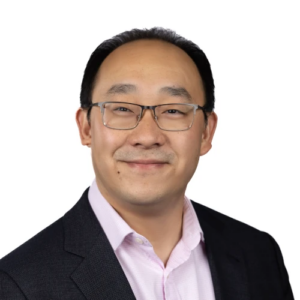

(dTosh/Shutterstock)
Anaconda created a name for itself in the data science community over the past decade by combining hundreds of the most popular Python-based statistical and machine learning packages, such as NumPy, Pandas, and SciPy, into one easy-to-use package. As the GenAI revolution spreads across the land, the Austin, Texas-based company is now looking to find stronger footing to take it to the next decade.
In January, Anaconda announced a change at the top of its org chart, with longtime member of the board of directors Barry Libert taking over the CEO position and Peter Wang moving to head up the company’s new AI Incubator as its Chief AI & Innovation Officer. The company stated the goal of the change was to a further accelerate growth of the company, which already had expanded its enterprise customer count by 15x since 2020 and just had its biggest quarter in Q4 2023 while reducing its burn by 65%.
Libert and Wang recently made time for an abbreviated Q&A with Datanami, which is published here.
Datanami: Barry, what are your goals as the new CEO of Anaconda? What changes will you make to achieve them?
Libert: Since stepping into my role as CEO of Anaconda, my primary goal has been to build the leading AI enablement platform for the open-source world. Python is the foundation of modern AI and as the most trusted and widely used platform in the Python community, supporting nearly 50 million users and 800,000 organizations, Anaconda has a huge role to play in ensuring that the future of AI remains open, accessible, and secure.
The open-source Python community has been instrumental to Anaconda’s success and continuing to source innovation from open-source communities will keep Anaconda at the cutting edge. Between the partnerships we’ve established with industry leaders like IBM, Oracle, and Snowflake, and the open-source investments we’ve made through PyScript, Panel, and funding NumFOCUS, Anaconda is building a platform for everyone that wants to innovate and create. This isn’t a change in strategy but rather a doubling down on everything we’ve learned about building a thriving community.
AI is central to our vision for expanding Anaconda’s platform from 50 to 500 million users and 800,000 organizations to 5 million or more. More and more people will experience and work with AI in their daily lives and Anaconda will meet them at every stage of their journey. From the complete non-technical user to the most advanced AI developer, we recognize the importance of delivering to our users a seamless experience that allows them to succeed in any arena, whether that’s on-premises, in the cloud, or at the edge.
I am confident that with our talented team, vibrant community and partners, and a strong commitment to pioneering AI, Anaconda will build the platform for the open-source AI world.
Datanami: Peter, how does the AI Incubator fit in with Anaconda’s mission in the past, and how do you see it helping create what Anaconda will become in the future?
Wang: We created Anaconda in 2012 out of the need to bring Python into business data analytics and from the start, we’ve had an ongoing commitment to foster open-source innovation. Over the years the use of Python has grown instrumentally and our mission to empower the world with the power of AI, data science, and Python has remained at the core of everything we do.
Today, Python plays a central role in AI development – anyone using the tech has Python within some layer of their stack, making the creation of our AI Incubator a natural extension of our business. It’s also a step forward in our ongoing support to enable global institutions – from corporations to academia – in harnessing the power of open source, not only for competitive advantage but to also create a better world. I’m proud to be leading our AI Incubator and to oversee our developments in advancing Python performance in AI workloads.
Anaconda has become the foundation of modern AI development and as our world continues to become AI-driven, there’s a mounting need for a unifying force that simplifies the experience and delivery of AI applications. With the developments coming out of our AI incubator, paired with our Python and data science expertise, we see Anaconda becoming the operating system for AI – creating a bridge between AI and the next wave of human invention.
Datanami: Peter, why is Anaconda part of the AI Alliance? Why is it necessary to have openness and transparency in the AI field?
Wang: Our mission centers around helping to power AI innovations and, as AI continues to infiltrate our society, ensuring that these advancements are happening in an open, secure, and responsible way so that businesses and society at large are positively impacted by the tech. By joining the AI Alliance, we’re able to collaborate with other industry leaders on breakthrough AI developments in a way that encourages safety and accessibility – both of which are critical pillars to the future of innovation.
We see openness and transparency as the best path forward, not only for AI but also for its impact on humanity. In the ongoing debate between how open AI should be, we believe AI developments shouldn’t be siloed and are strong advocates that the future of AI rests upon an open source foundation. AI advancements are increasingly happening behind closed doors, creating an environment that not only makes it difficult to ensure that these developments are remaining ethical and democratic but one that is also causing the public to lose trust.
By taking an open-source approach to AI, trust can be built at scale by providing users more direct visibility into these developments and the ability to ease bias, ethical or security concerns. This level of transparency will be paramount in building more confidence in AI systems
Related Items:
Anaconda’s Commercial Fee Is Paying Off, CEO Says
Open Source Still Rolling, But Roadblocks Loom
Why Anaconda’s Data Science Tent Is So Big–And Getting Bigger
July 2, 2025
- Bright Data Launches AI Suite to Power Real-Time Web Access for Autonomous Agents
- Gartner Finds 45% of Organizations with High AI Maturity Sustain AI Projects for at Least 3 Years
- UF Highlights Role of Academic Data in Overcoming AI’s Looming Data Shortage
July 1, 2025
- Nexdata Presents Real-World Scalable AI Training Data Solutions at CVPR 2025
- IBM and DBmaestro Expand Partnership to Deliver Enterprise-Grade Database DevOps and Observability
- John Snow Labs Debuts Martlet.ai to Advance Compliance and Efficiency in HCC Coding
- HighByte Releases Industrial MCP Server for Agentic AI
- Qlik Releases Trust Score for AI in Qlik Talend Cloud
- Dresner Advisory Publishes 2025 Wisdom of Crowds Enterprise Performance Management Market Study
- Precisely Accelerates Location-Aware AI with Model Context Protocol
- MongoDB Announces Commitment to Achieve FedRAMP High and Impact Level 5 Authorizations
June 30, 2025
- Campfire Raises $35 Million Series A Led by Accel to Build the Next-Generation AI-Driven ERP
- Intel Xeon 6 Slashes Power Consumption for Nokia Core Network Customers
- Equal Opportunity Ventures Leads Investment in Manta AI to Redefine the Future of Data Science
- Tracer Protect for ChatGPT to Combat Rising Enterprise Brand Threats from AI Chatbots
June 27, 2025
- EarthDaily Ignites a New Era in Earth Observation with Landmark Satellite Launch
- Domo Deepens Collaboration with Snowflake to Accelerate AI-Driven Analytics and Data Integration on the AI Data Cloud
- AIwire Launches Annual People to Watch Program
June 26, 2025
- Inside the Chargeback System That Made Harvard’s Storage Sustainable
- What Are Reasoning Models and Why You Should Care
- Databricks Takes Top Spot in Gartner DSML Platform Report
- Snowflake Widens Analytics and AI Reach at Summit 25
- Why Snowflake Bought Crunchy Data
- LinkedIn Introduces Northguard, Its Replacement for Kafka
- Change to Apache Iceberg Could Streamline Queries, Open Data
- Agentic AI Orchestration Layer Should be Independent, Dataiku CEO Says
- Top-Down or Bottom-Up Data Model Design: Which is Best?
- The Evolution of Time-Series Models: AI Leading a New Forecasting Era
- More Features…
- Mathematica Helps Crack Zodiac Killer’s Code
- AI Agents To Drive Scientific Discovery Within a Year, Altman Predicts
- ‘The Relational Model Always Wins,’ RelationalAI CEO Says
- Confluent Says ‘Au Revoir’ to Zookeeper with Launch of Confluent Platform 8.0
- Solidigm Celebrates World’s Largest SSD with ‘122 Day’
- DuckLake Makes a Splash in the Lakehouse Stack – But Can It Break Through?
- The Top Five Data Labeling Firms According to Everest Group
- Supabase’s $200M Raise Signals Big Ambitions
- Data Prep Still Dominates Data Scientists’ Time, Survey Finds
- With $17M in Funding, DataBahn Pushes AI Agents to Reinvent the Enterprise Data Pipeline
- More News In Brief…
- Astronomer Unveils New Capabilities in Astro to Streamline Enterprise Data Orchestration
- Databricks Unveils Databricks One: A New Way to Bring AI to Every Corner of the Business
- BigID Reports Majority of Enterprises Lack AI Risk Visibility in 2025
- Snowflake Openflow Unlocks Full Data Interoperability, Accelerating Data Movement for AI Innovation
- Astronomer Introduces Astro Observe to Provide Unified Full-Stack Data Orchestration and Observability
- Seagate Unveils IronWolf Pro 24TB Hard Drive for SMBs and Enterprises
- Gartner Predicts 40% of Generative AI Solutions Will Be Multimodal By 2027
- Databricks Donates Declarative Pipelines to Apache Spark Open Source Project
- Code.org, in Partnership with Amazon, Launches New AI Curriculum for Grades 8-12
- BigBear.ai And Palantir Announce Strategic Partnership
- More This Just In…




























